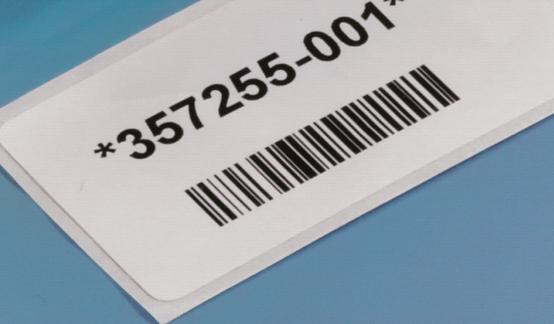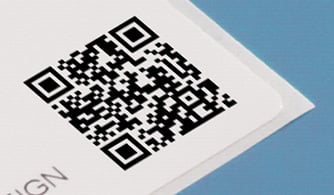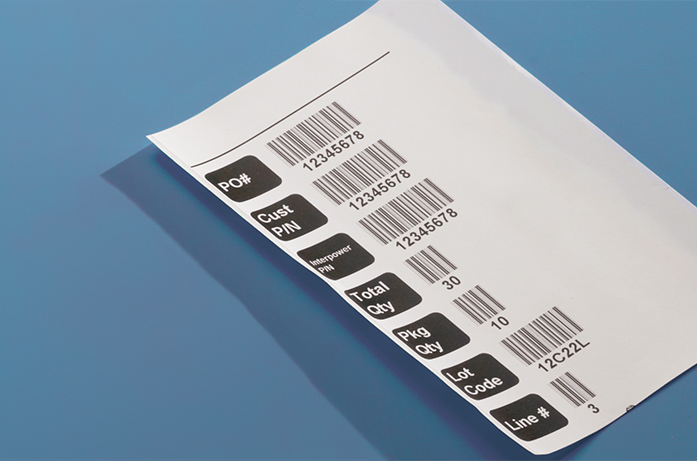While the list of value-added options on Interpower’s website is comprehensive, two inventory solutions available to customers are customized barcodes on shipping labels, and serial numbers labeled on each cord and component.
Barcodes
While the first patent for a barcode was accepted in 1952, it wasn’t until 1974 that Marsh’s supermarket in Troy, Ohio, was the first store to commercially scan a UPC code. National Cash Register (NCR), located in Troy, provided the equipment. Since then, barcodes and their scanners have become essential to everyday commerce in every industry. Today, hundreds of barcodes can be scan-read in mere seconds by a single scanning device, making large inventory audits less daunting. Lot tracking via barcodes is a “best practice” in inventory management—it allows product tracking throughout the entire supply chain. Barcodes contain lot codes such as warehouse location (bin location), the supplier, when the product(s) was received, and the time and date of purchase.
 |
A 1-D barcode is a machine-readable code printed on a label in the form of numbers or alphanumeric designations and a pattern of parallel lines of varying widths. These identifiers may include location, category, price, and other key details. Typically, barcodes are scanned and automatically entered into a software system. That software data connects to global distribution systems allowing companies to manage inventories and logistics and see what is trending, what items need to be stocked over others, and what items should be discounted to free up more space for products with higher demand. |
 |
A 2-D, QR, or micro QR code can direct multi-industry consumers to company websites, products, and other information via the flash of a scan. The 2-D codes are comprised of boxes or similar shapes with solid lines at the borders while QR codes contain solid boxes at the corners. These small blocky box codes can contain hundreds of characters for the scanner to read whereas 1-D barcodes contain far less information. |
Serial Numbers
Serial numbers complement lot codes in that each cord or component is labeled and identified, ensuring they are accounted for during inventory audits. Serial numbers also inform managers who purchased the cord and the day of the purchase. Serial numbers can appear on packaging labels in either barcode or alphanumeric form. Having each product numbered with a serial number shows proof of ownership, and may help with loss prevention if they don’t show up in inventory.
Tracking It Down
A common inventory tracking system is one comprised of tracking software and a barcode scanner. Inventory items (products such as cord sets or components or raw materials) can be added or removed from stock—it’s automatically tracked in the software, saving you from typing in a Stock-Keeping Unit (SKU).
Customer barcode criteria often includes one or more of the following: Global Trade (GT) ID numbers, lot codes, and 2-D or QR codes. The first 14 numbers on the barcode is the company’s GT code. The set of numbers after the GT ID represents lot codes and production dates as well as many other identifier numbers as a company may prefer.
If there are smaller barcodes above the GT ID, those codes may be lot codes and customer part codes, which are also scannable. Labels with multiple barcodes may contain a company logo or multiple logos. The logos are likely used both as a product identifier and for marketing purposes. The label may contain several foreign languages accompanying the codes depending on place of manufacture or destination. 2-D and QR codes and micro QR codes can direct multi-industry consumers to company Websites, products, and other information via the flash of a scan.

It’s on the Label
The quality and accuracy (how the code is arranged on the label) is yet another quality control at Interpower—it must be accurate, centered and in dark enough font. Interpower uses both wax and paper labels depending on their destination and use. If one vertical bar is too close to the edge, it may not read properly. Centering the label also demonstrates quality workmanship—the customized barcode label must “delight” the customer.
Medical
The FDA requires that all institutions dispensing medicines place barcodes on those medicines. What the agency does not require is what the label materials should be or their positioning, i.e., their “quality.” If scanning an extremely small vial label that is not centered, wrinkled, or too curved, the label may not scan. This led to the use of smaller 2-D barcodes that are easier to scan. These barcodes have life-saving consequences, as getting the right patient the right dose of the right medicine is vital. The 2-D barcodes on medicine containers is a small sample of barcoding used by the medical industry.
